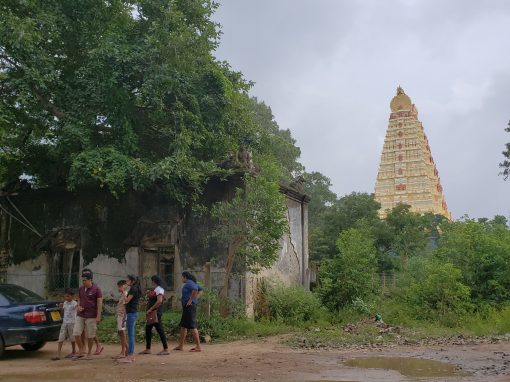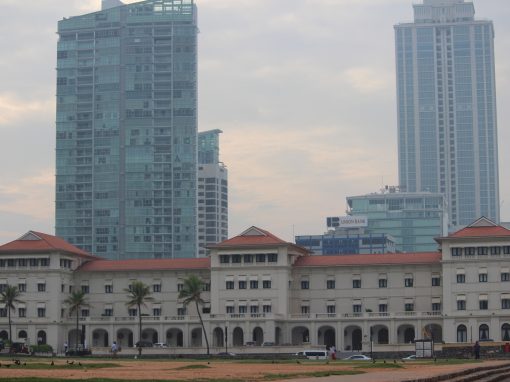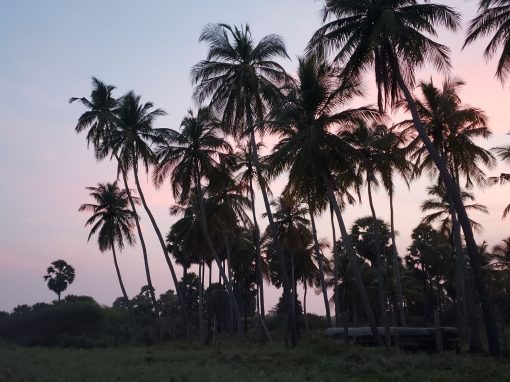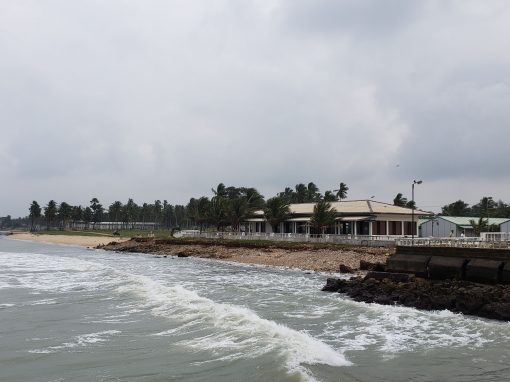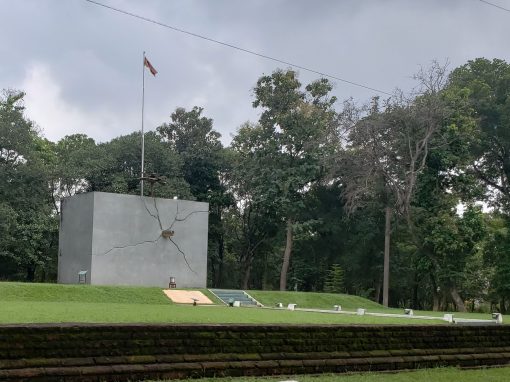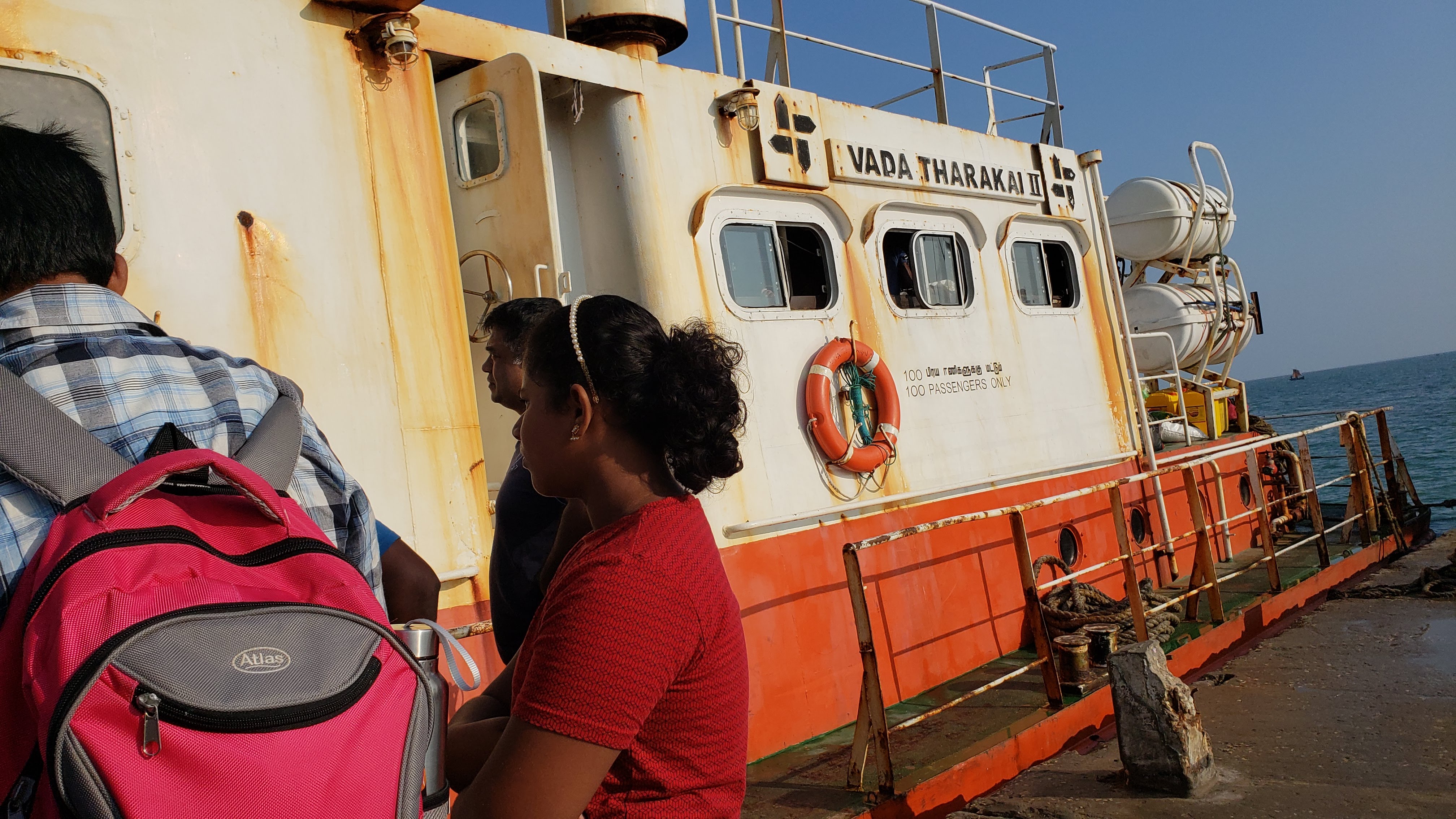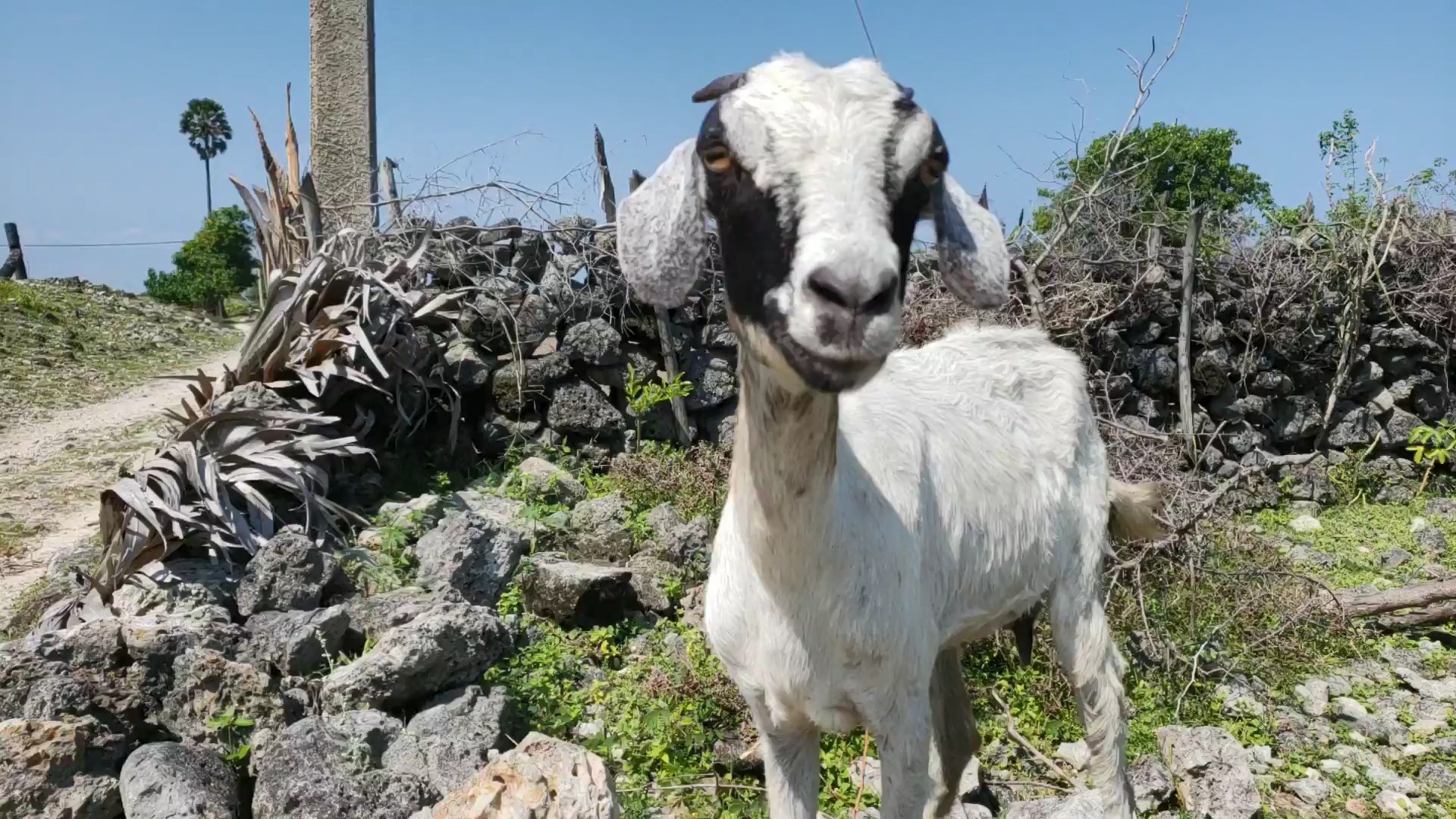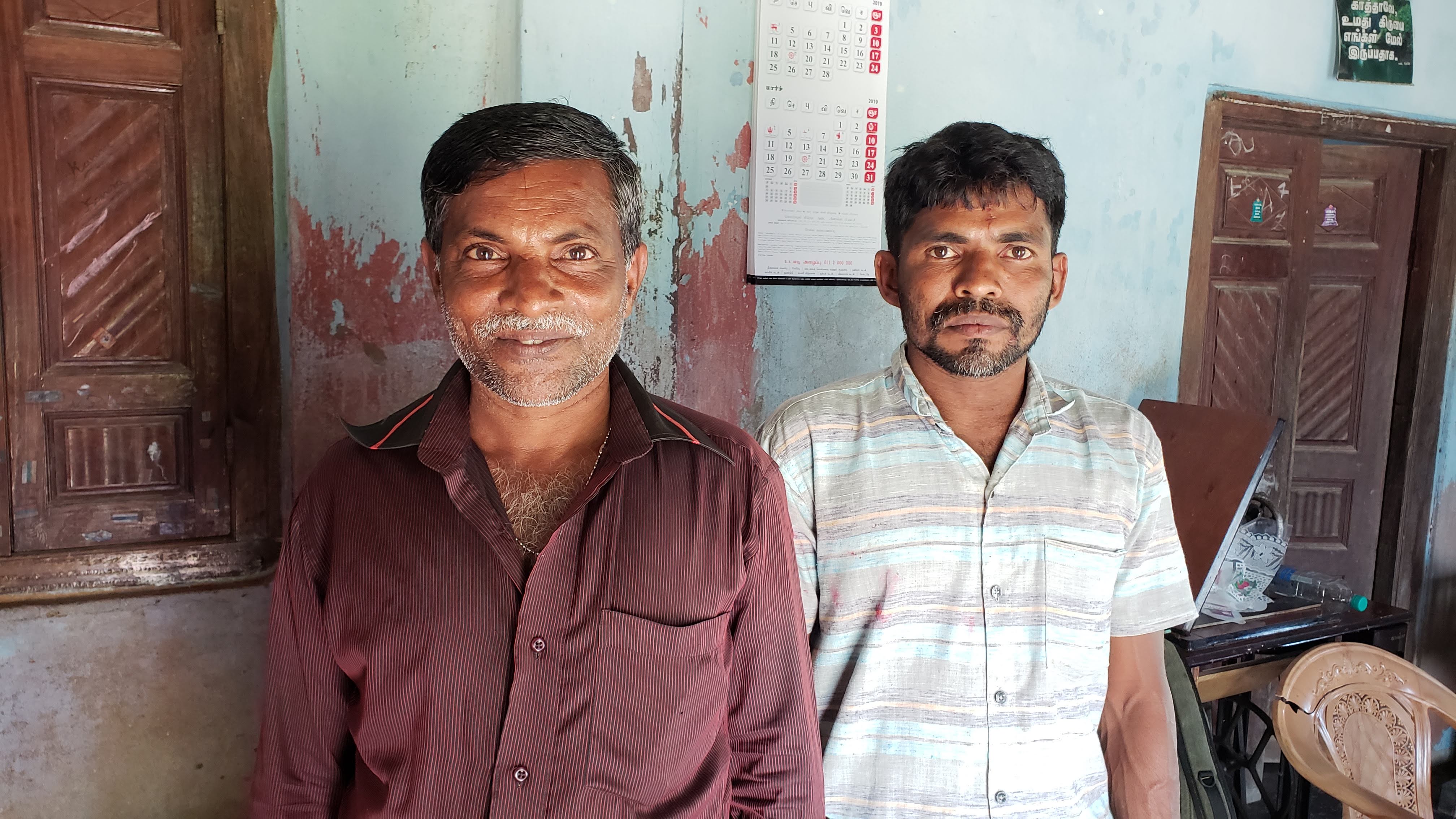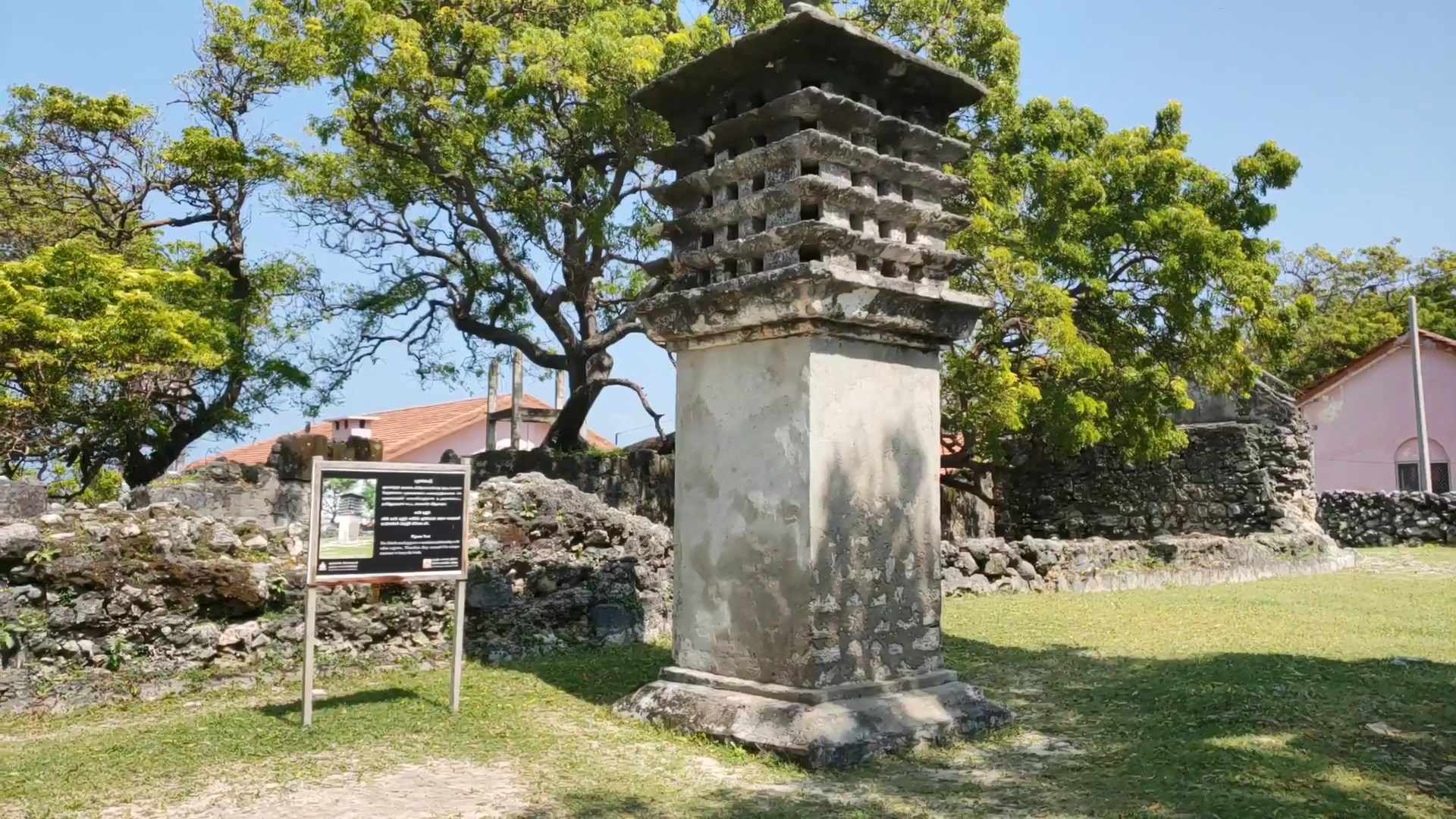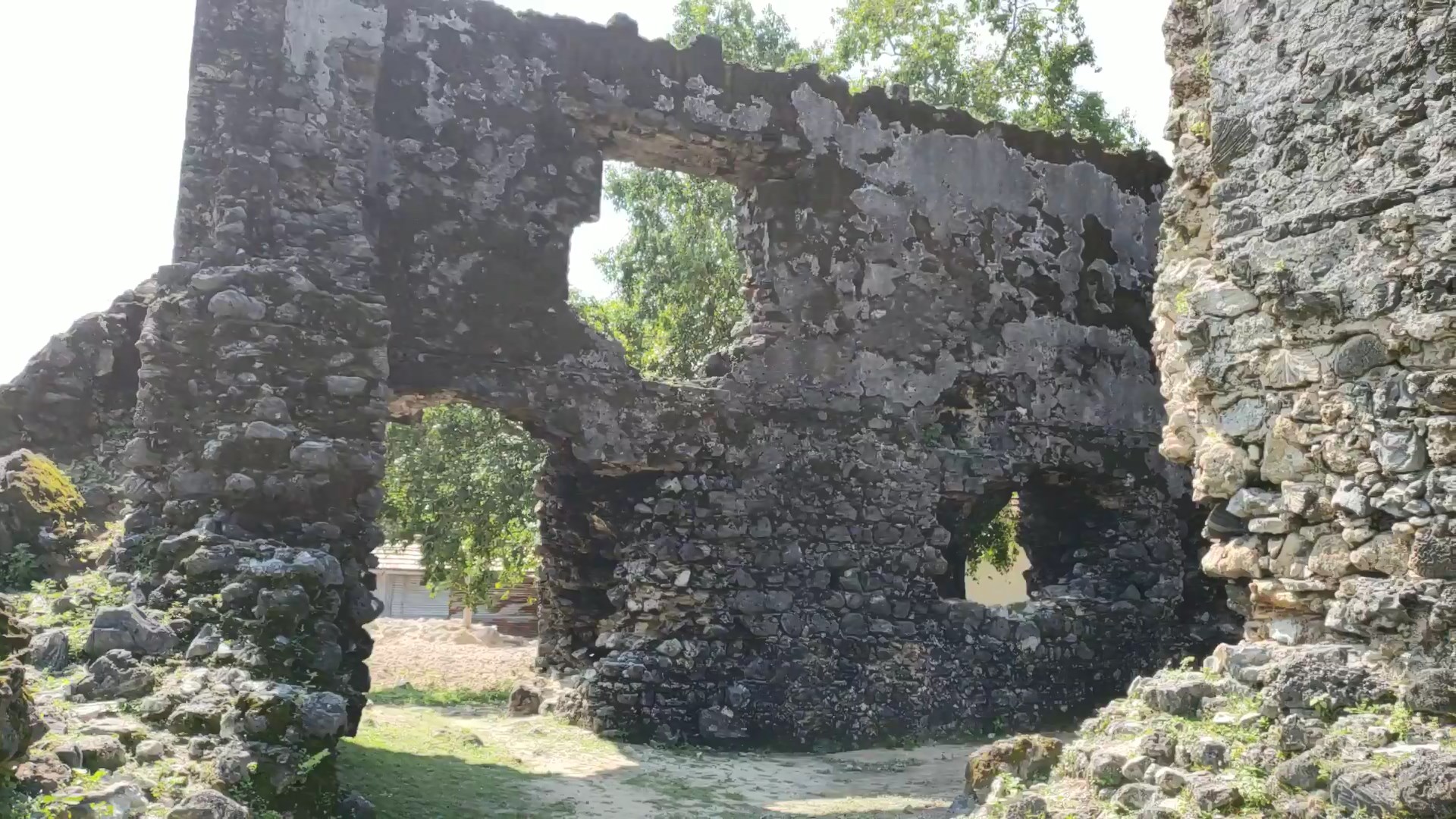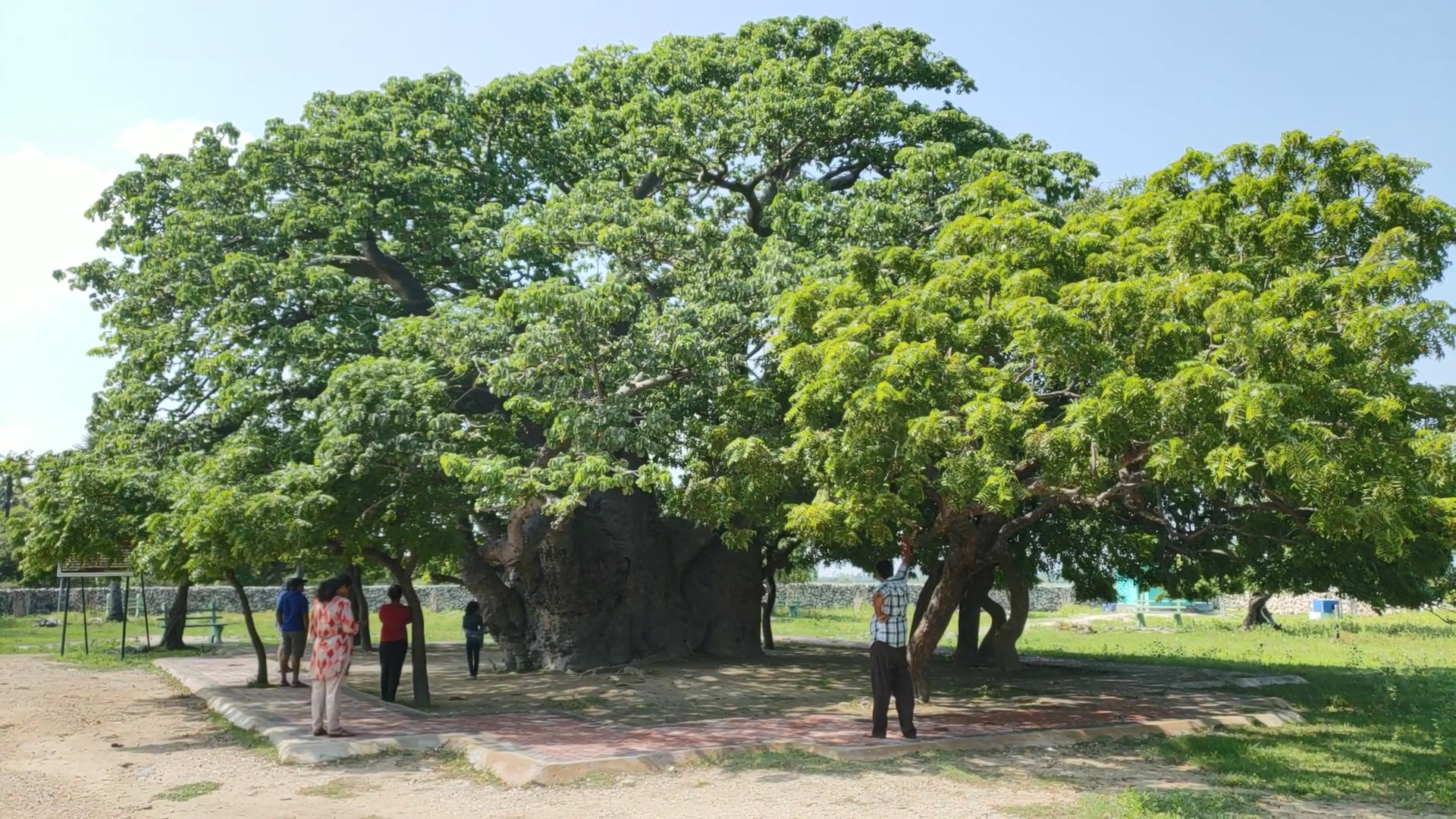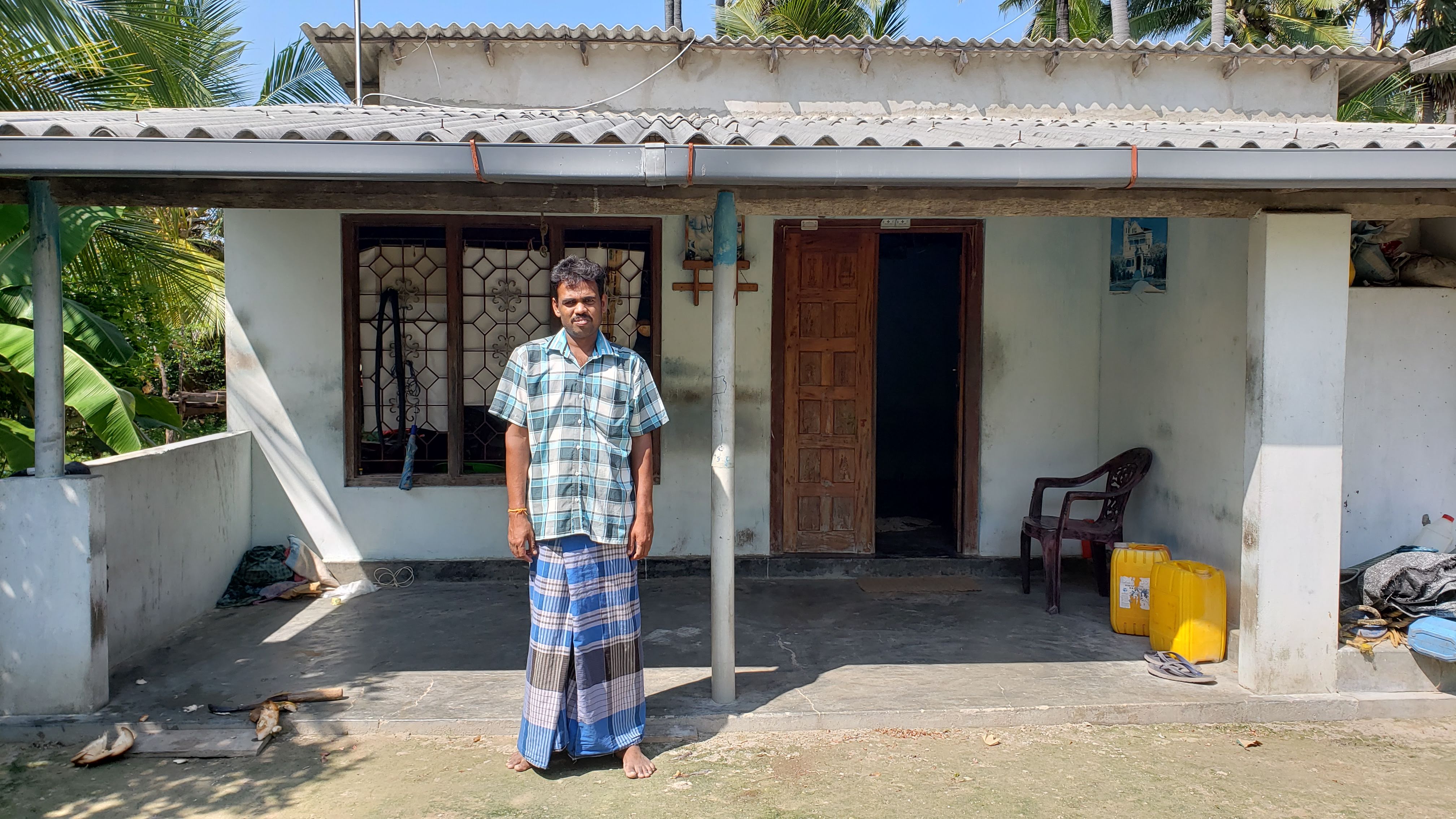Section III: Northern Province
Thalsevana Resort at Kankesanthurai in the Jaffna district is a complex of rooms and restaurants run by the military. (Photo © Stephen Cook)
Under the shade of a corrugated roof of a small snack shop, Selvathurai Navarathai shares the story of his village while we sip on orange fizz. Green trucks rumble by on the nearby dirt road.
Many years ago it was a land of milk and honey – or to make the metaphor more regionally appropriate, fish and coconuts. The people of Mayliddy village thrived in agriculture and fishing – Navarathai claims 14 trucks of fish would be hauled to market every day.
But in 1990, the military took control, establishing a High Security Zone and displacing the locals who had lived there for generations. Families scattered, Navarathai finding himself 20 kilometres away at Point Pedro.
The people of Mayliddy never gave up on returning home. After years of protest and petitions, their cause was finally taken up by the national parliament and in the summer of 2017 the land was formally returned.
Villagers came back to find their homes razed to the ground. This happened after the war sometime in 2013, says Navarathai, a fact he knows because the military had previously let them visit the nearby temple for a high holiday.
The villagers were given some money to rebuild their homes, but Navarathai says it was only half the amount needed, leading many to take on debt. When salespeople came around offering to tile roofs at half the usual cost, many villagers were all too willing to take up the deal.
But in the sweltering summer heat, the low-quality tiles warped and melted. Navarathai says now when it rains at night – which in the wet season between December and March is all the time – a tarp offers little protection to the children trying to sleep beneath.
“We don’t want to leave this place because we were landless before somewhere else,” he says. “When the land was released, we came here. But now it seems like we might have to leave the land and go back again because it’s so hard to settle down.”
Navarathai has little faith the government will help either.
“I don’t believe the government will do anything, has the capacity to do anything, or wants to do anything.”
Once a small guest house, the Thalsevana Resort now boasts 45 rooms and a family cabana. Overlooking the Kankesanthurai beach, the patio restaurant (one of several) offers a selection of drinks as well as ice cream, a popular northern treat. A calypso band plays on weekends and the space is available to rent for weddings and other functions.
“Situated on the silver beach of Kankesanthurai, isolated from the hustle and bustle of the city, this majestic mansion offers you a panoramic view of the northern most Sri Lankan sea while satisfies you with a range of eastern and western meals,” reads the website.
But whatever profit is made in the large resort, which often hosts wedding and events, it does not trickle down to Mayliddy, according to Navarathai. There are not even any employment opportunities available – Thelsevana is one of a number of business ventures run by the military.
“No future without forgiveness,” reads a giant sign at the front gate. The defence department did not respond to requests for comment.
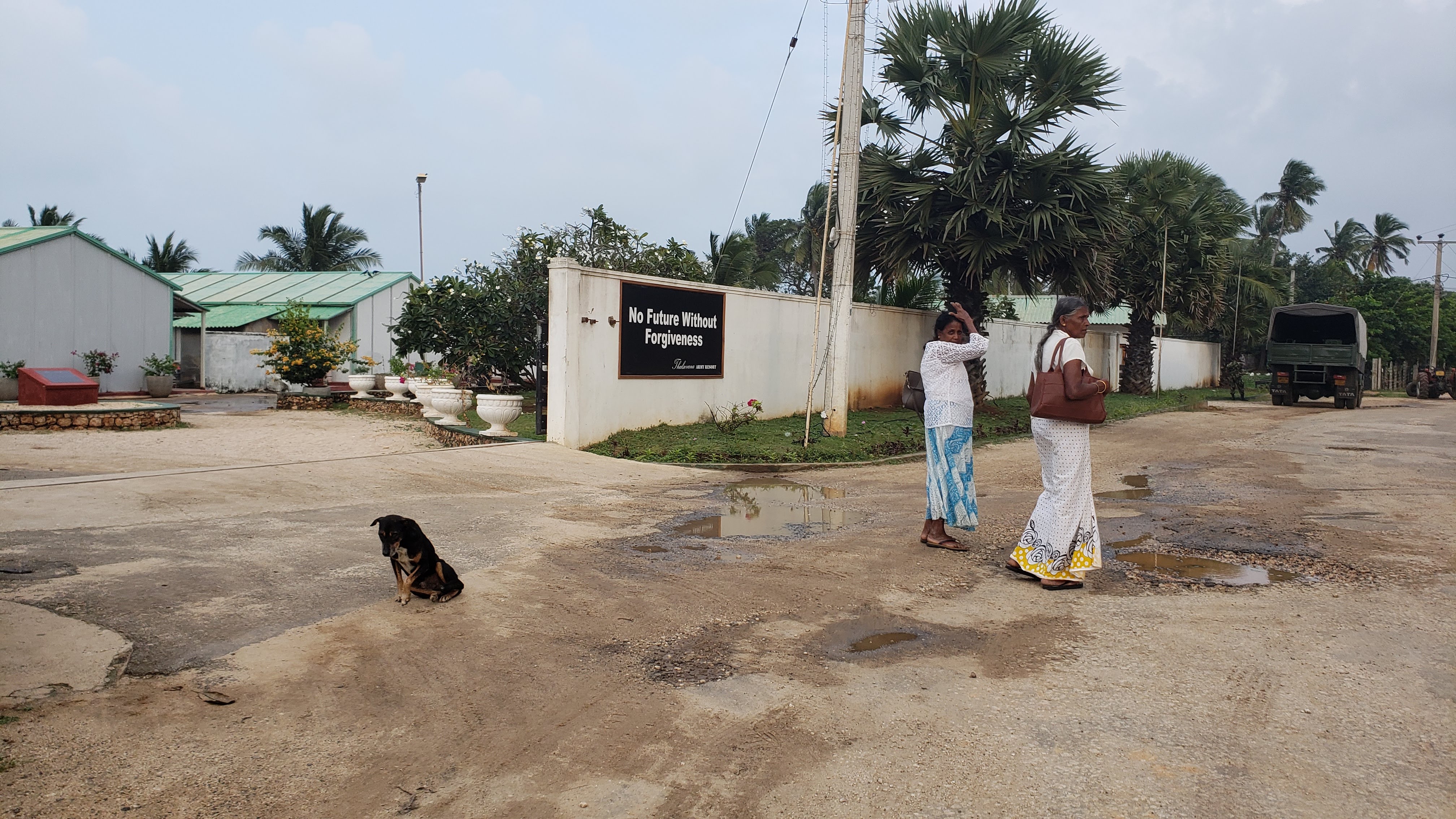
The front entranceway to the Thalsevana Resort. (Photo © Stephen Cook)
But tourism development issues go beyond military occupation.
“(Kankesutharai) is one beach,” Sivanandamoorthy Sivesan tells me at Jaffna University. Sivesan is a professor of commerce specializing in tourism development who also sits on the Northern Province’s newly-minted Northern Tourism Bureau.
“We have a lot of beaches, we can invest in other places also.”

Sivanandamoorthy Sivesan is a professor of commerce at Jaffna University. He recently wrote a book on the difficulties of tourism development in the Northern Province. (Photo © Stephen Cook)
The money Thelsevana Resort brings in stands in stark contrast to the poverty that surrounds it and there is no doubt the military’s eviction of the villagers at Mayliddy is a causal effect. But the faltering pace of tourism growth in the Northern Province, meant to help lift its people from poverty, is at least partially a disconnect between central government policy and grassroots understanding.
It is another divide felt especially in the Tamil-dominated north: between policy and practice, between federal and local, between Tamil and Sinhalese.
According to Sivesan, while the perspective of the central government 400 kilometres away in Colombo is reflected in these proposals, the local perspective is not.
“They don’t consider our needs and wants. For example, if you develop a tourism destination, they should ally what type of tourism is important for the north.”
In the north’s predominantly Hindu society, the prevalence of ancient temples would seemingly be worthy of attention. This is a land of ancient Hindu kingdoms and Jaffna especially was once the seat of power for Tamil kings competing with Sinhalese counterparts further south. In the early 1990s, the LTTE made it their de facto capital until the army ousted them in 1995. Their rule solidified the domination of Tamil Hindus in the north, ethnic cleansing expelling 70,000 Muslims from the province. Today, Jaffna district is approximately half a million people, overwhelmingly Tamil, with a not insignificant poverty rate of 7.7 per cent.
The Northern Tourism Bureau seemingly recognizes the Hinduism that so characterizes this region, offering printed postcards and guidebooks highlighting the province’s many beautiful sights: Nallur Temple, the Miracle Springs of Keerimalai, the statue of the last king of Jaffna, Sangiliyan. In the bureau’s 2017-2020 tourism strategic plan, an entire section is dedicated to religious tourism, recommending promotion to Indian Hindus looking to visit sites related to the Ramayana or to shop ancient Catholic churches built by the Dutch and Portuguese to European visitors.
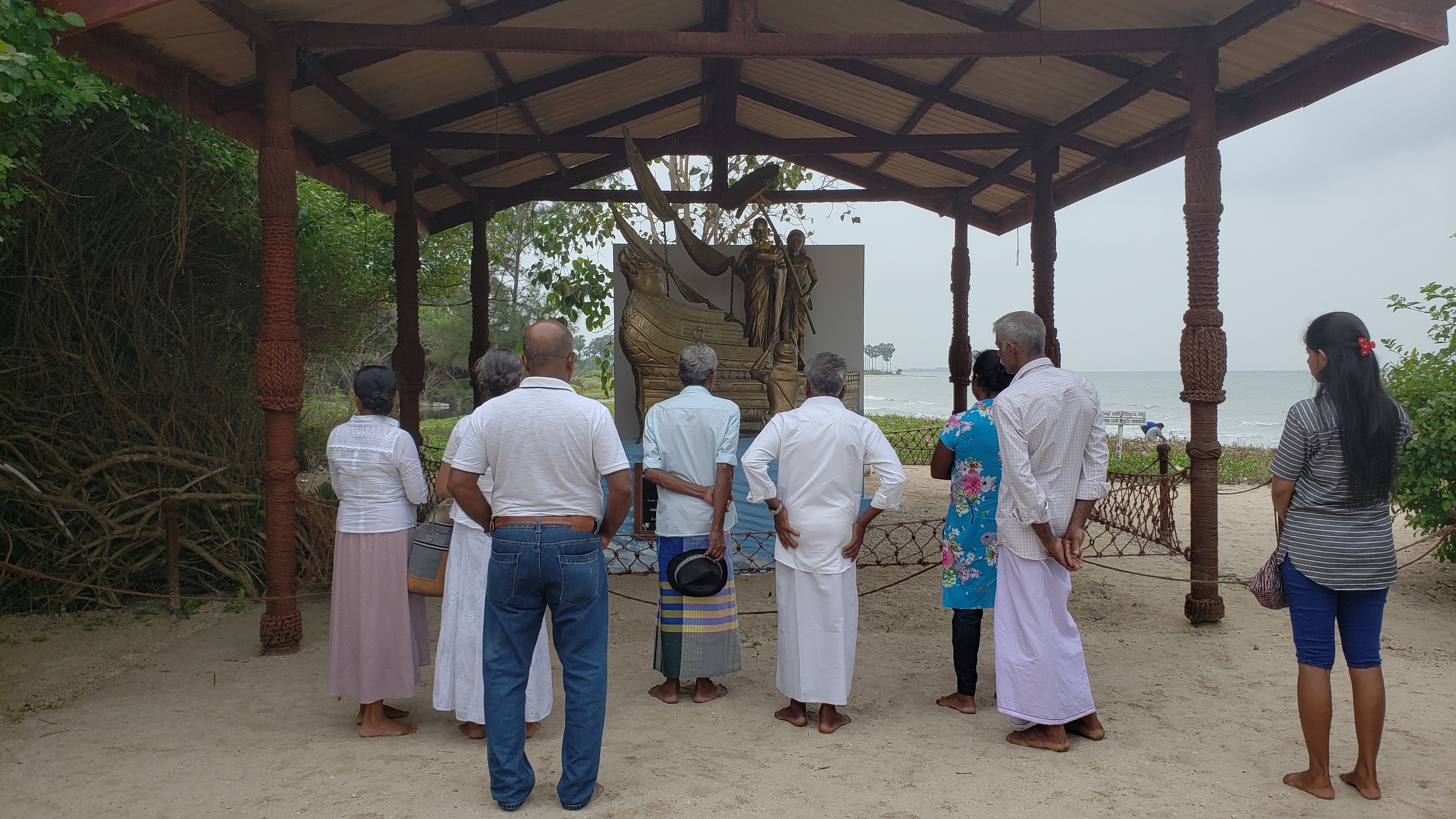
Tourists gather around a statue depicting a Sacred Bo Sapling being brought ashore in Dambakola Patuna Viharaya.
The story is an important legend and source of heritage for Sinhalese Buddhists. (Photo © Stephen Cook)
But the national Sri Lanka Tourism Development Authority list of attractions is focused almost exclusively on Buddhist sites like the sixty stupas at Kadurugoda Temple or Nagadeepa Purana Raja Maha Viharaya Temple where Buddha supposedly once visited.
At Dambakola Patuna Viharaya, a sacred Bo sapling was brought ashore in 249 BC. The golden statue and accompanying stupa is on land occupied by the Sri Lankan Navy, which runs a nearby cafe and small gift shop kiosk selling postcards and knickknacks.
The difference in attraction listings is indicative of a Sinhalese Buddhist-dominated central government, whose lens is not compatible with the local view of potential attractions.
The SLTDA did not respond to request for comment.
A statue of Hanuman from the Hindu epic Ramayana is a famous site in the city of Jaffna. (Photo © Stephen Cook)
TOURISM AND CULTURE
Both the STLDA interactive map and the Northern Province’s strategic plan place special emphasis on Delft Island off the coast. Home to a naval base, the island has remained relatively isolated and especially so during the war.
The island is unique in Sri Lanka for many reasons, including the use of dried coral reef for fencing, the presence of horses long-ago brought by Arab traders (who also planted a still-living 500-year old Baobab tree), and the ruins of Dutch administrative buildings and churches.
The primary way to access the island is by Naval ferry, offered free of charge and running twice daily. It crosses nearby waters where in 1985, 23 Tamil men and women were allegedly hacked to death by navy personnel on board a ferry crossing from Delft to another nearby island.
No one has been held accountable.
When I visit several villages around Delft, the story is the same: there has been no consultation and no real desire to get involved in catering to the throngs of daily Sinhalese visitors, although some have taken to selling goods and there are some enterprising Tuk-Tuk drivers. A single guesthouse has been established although I am told it does not belong to anyone on the island.
Sivesan is critical of this lack of community engagement with locals, resulting in such disinterest: people on the ground simply do not want to be involved in tourism or related industries. It’s a dynamic Sivesan says could be overcome if properly promoted by the government – particularly its possible income-generation, the source of a potential boon to people still struggling to recover from the effects of the war and a slew of microfinancing schemes that have left many deeply in debt.
“The government needs to promote community-based tourism, homestay mechanisms – those different packages to the local community,” Sivesan says.
The strategic plan, too, identifies a need to organize community awareness programs. It also recognizes another critical issue: a lack of hospitality skills and training, something hoteliers around Jaffna tell me they feel acutely.
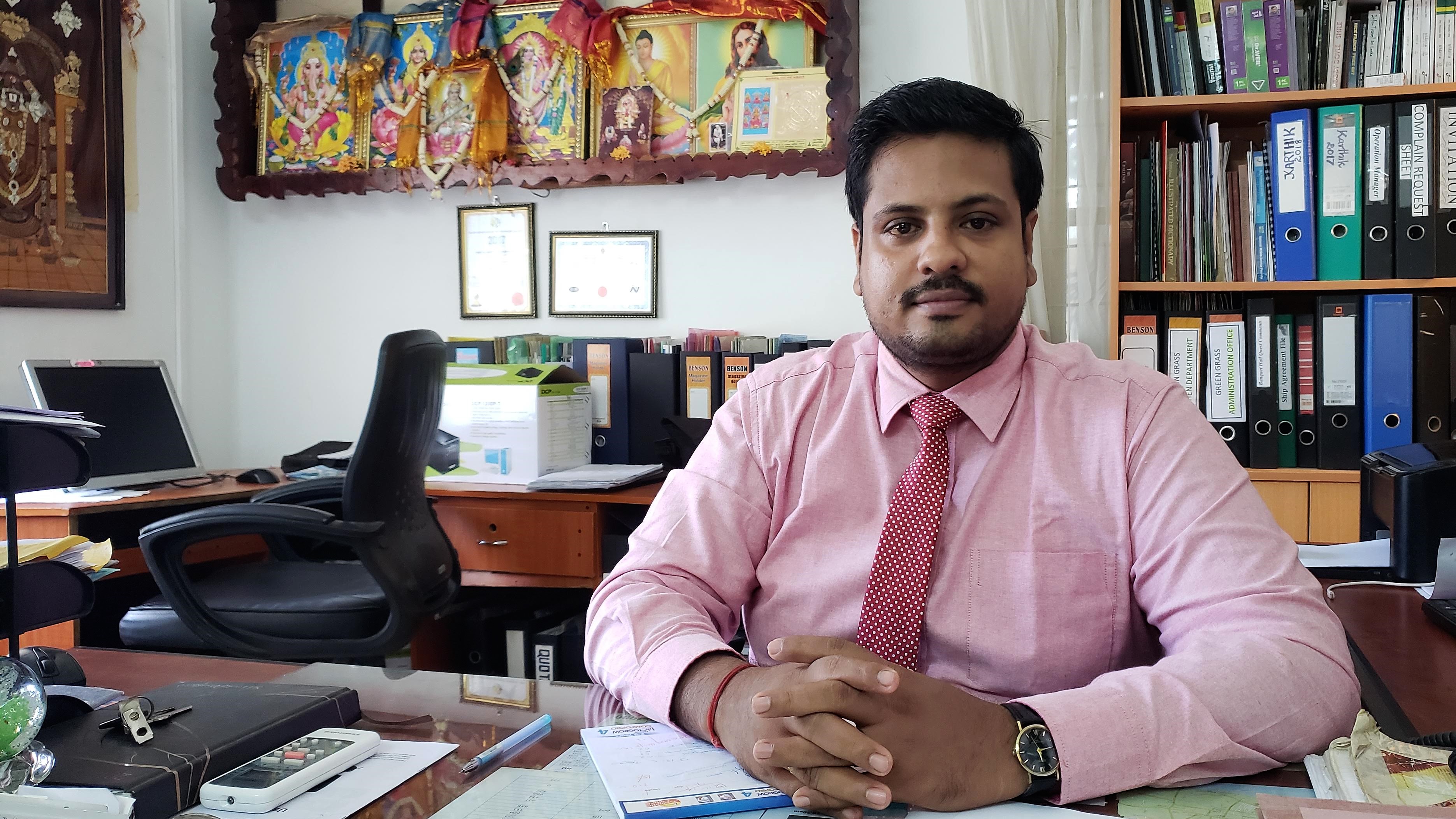
Sriskantharjah Karthigan’s management office at the Green Grass Hotel features religious iconography from Hinduism, Buddhism and Christianity. (Photo © Stephen Cook)
“In this region we are running businesses and hiring people from somewhere else,” explains Sriskantharajah Karthigan, general secretary for the Northern Province Tourism Association, from his office as general manager for the Green Grass Hotel in Jaffna.
The private group was formed by hotel and guesthouse owners after the end of the war to try to promote tourism in the north. In the past two years the association has struggled to address skills development while a government-sanction tourism school only just opened in September 2018.
International aid has at least attempted to fill those skill gaps and provide employment training. For the past five years, the World University Service of Canada non-profit has run a comprehensive skill development program throughout Sri Lanka, especially aimed at youth and women. Through targeted market research and partnerships with local education organizations, it has trained people in construction, automotive maintenance and tourism.
(AUSAID runs a similar program, Skills for Inclusive Development, out of Batticaloa in the Eastern Province)
But skills gaps are still only a small part of the difficulties faced by the burgeoning industry.
“Here the industry is very new so people are not aware of it,” says Karthigan. “And there are some cultural barriers for the beginning of the tourism, they think tourism is something like prostitution.”
Quite literally in the case of women, who across national employment statistics are worse off than men. That divide is even more pronounced in the north owing to cultural norms. Udhayani Navaratnam, a former women’s development coordinator for the Jaffna district, says women here are stigmatized for working.
The war left many women widows, childless and struggling to survive. Navaratnam says some programs introduced to assist in livelihoods were ineffective, partially owing to a lack of continued monitoring and assistance but also because they were sometimes simply inappropriate for the region. She gives the example of women given hybrid cattle not suited to the weather and climate of the north. Besides their unsuitability to the environment, the cattle were also expensive to maintain.
There are also the psychosocial scars that remain untreated and stigmatized.
“For example, before the 80’s in a woman-headed household in a particular village, the neighbouring house members are very closely related,” explained Navaratnam. “They have some protection, at least some emotional support.”
But displacements – Navaratnam says war-affected people were often moved on average between 10 and 20 times – broke those bonds and support systems.
She says livelihood recovery must be on a “holistic” approach.
“But the poor women are unable to believe that I can join tourism, that is the ground reality,” she says. “Even though some women are working as a cleaning service or some reception, their immediate family member and extended family members criticize them.”
“Basically in Jaffna peninsula, tourism and culture don’t go well together,” explained Christopher Ponnadurai. Ponnadurai is originally from Colombo, which he left for Australia around 1984 following Black July. Although he earned a hotelier diploma in 1971, while overseas he earned an accounting degree and worked for the Australian tax office for 28 years. He also ran a restaurant in Melbourne.
“I came to Jaffna to do something for Jaffna,” he says. “I thought it was the best place because I know tourism is in the initial stages so I thought why not give my knowledge back to this industry.”
As general manager for hotel chain Jetwing, he’s played a hand in opening two hotels in Jaffna: Jetwing Jaffna and North Gate by Jetwing. Within the company’s own training structure, Ponnadurai says he trained 70 local workers but less than a third remain.
London-based advocacy group the Sri Lanka Campaign includes the Jetwing Jaffna Hotel a place to avoid because it was built in partnership with Mercantile Merchant Banking Limited. MMBL, in turn, was founded in part by Milinda Moragoda, who served as a senior government advisor from 2010 to 2015 in the postwar Rajapaksa regime.
On the ground, however, Ponnadurai has tried to offer careers to the predominantly Tamil people of Jaffna. But circumstance has forced him, like many others, to make up for employee gaps by bringing in workers from elsewhere, including Colombo and the south.
Most cooks in his kitchens now speak only Sinhala.
